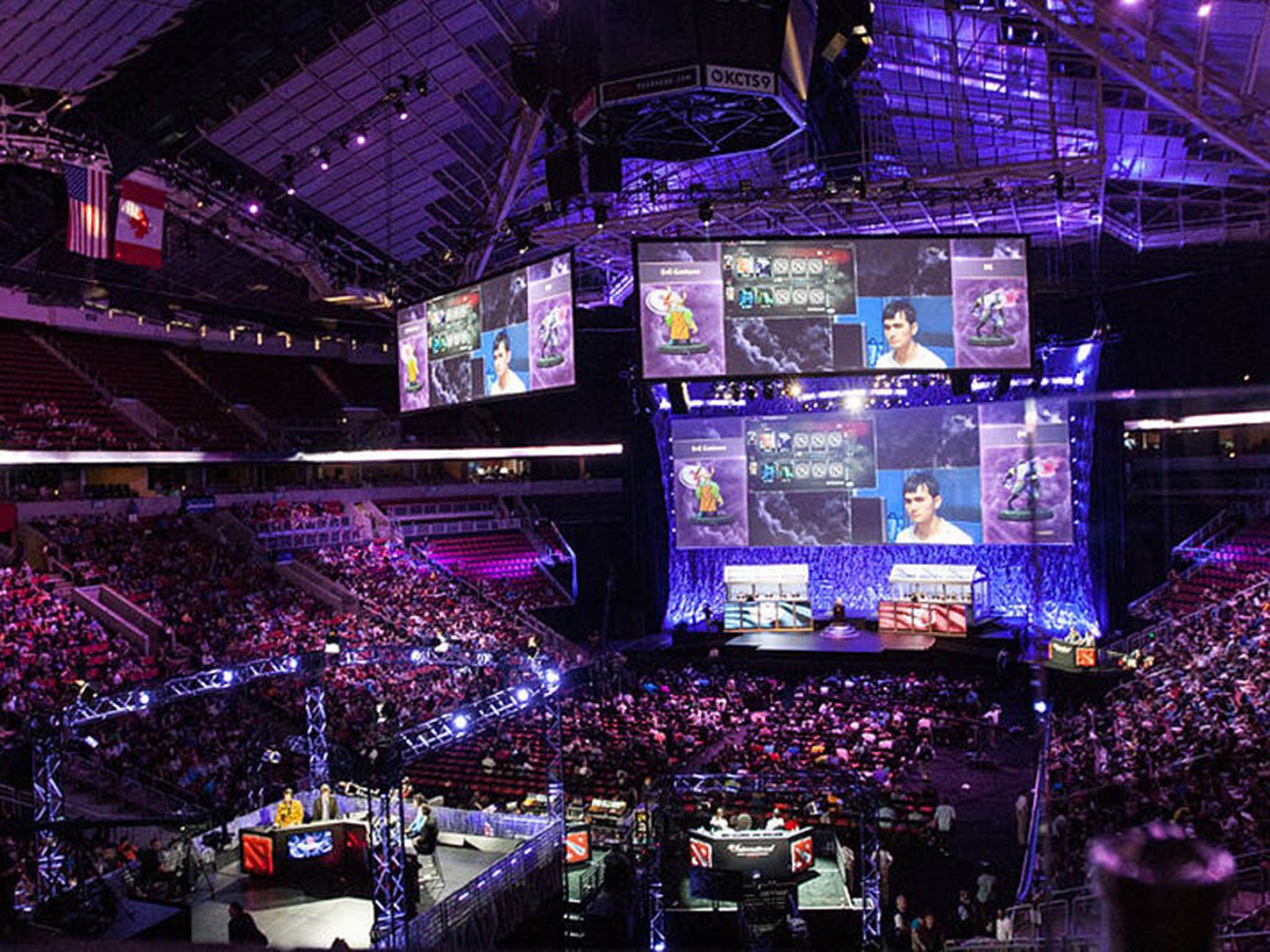Space Invaders at 40: What the game says about the 1970s – and today
A reflection of its own time, the iconic arcade game planted the seeds of today’s video game culture

Your support helps us to tell the story
From reproductive rights to climate change to Big Tech, The Independent is on the ground when the story is developing. Whether it's investigating the financials of Elon Musk's pro-Trump PAC or producing our latest documentary, 'The A Word', which shines a light on the American women fighting for reproductive rights, we know how important it is to parse out the facts from the messaging.
At such a critical moment in US history, we need reporters on the ground. Your donation allows us to keep sending journalists to speak to both sides of the story.
The Independent is trusted by Americans across the entire political spectrum. And unlike many other quality news outlets, we choose not to lock Americans out of our reporting and analysis with paywalls. We believe quality journalism should be available to everyone, paid for by those who can afford it.
Your support makes all the difference.The Space Invaders arcade video game, celebrating its 40th anniversary, is a classic piece of software credited as one of the earliest digital shooting games. Like many early games, it and its surrounding myths showcase the cultural collisions and issues current at its creation by Japanese game designer Tomohiro Nishikado.
As a game designer and teacher of games, I know how meaning is carried from designer to the mechanics of play. As a game studies researcher, I also know how games reveal myth, meaning and culture.
An analysis of Pac-Man, for instance, shows how that game embodies many values of its day – including consumerism, drug use and gender politics. The message in Space Invaders is as basic as the graphics: when faced with conflict, players have no option except to blast it away.
Avoiding an enemy only delays the inevitable; players cannot move forward or back, but can only defend their space. There’s not even a reason why the invasion is occurring. Players know only that the invaders must be destroyed. It’s a distinct cultural perspective, emphasising shooting over everything else.
A historical pioneer
The history of many shooting games can be traced to Space Invaders. It’s not the first – MIT’s Spacewar! was earlier, in 1961 – but Space Invaders is among the most copied. Even people who never played the original Space Invaders have likely played the more than 100 clones of it – including the first advertising game, Pepsi Invaders.
Spacewar!
The release of Space Invaders foreshadowed the growth of the Japanese games industry, which itself was seen as a fearsome cultural invasion of the US by Japan. The tension was expressed in popular media as a defence of American individualism against the power and efficacy of Japanese collectivism and corporate culture. This tension displayed itself in popular media like the comedy film Gung Ho as a combined Japanophobia and Japanophilia.

Space Invaders also highlighted how tenuous some elements of Western identity were. The US had built its sense of self on being the greatest, but was being challenged by Japanese economic growth. But it was complicated: as Japanese automakers won customers from the American car companies, they began to build their cars in the US – so were they Japanese or American cars?
A game of Space Invaders
In the same way, if the American games company Atari’s biggest hit was a Japanese-made game, how American was Atari’s success? In any case, millions of US consumers bought the Atari 2600 game system to be able to play the hit arcade game Space Invaders at home. Five years later, in 1983, the games industry crumbled in large part because American-made games were not interesting and too similar to each other.
In 1985 the Japanese-made Nintendo Entertainment System ushered in a new era of home console play. That continued the challenge to the American identity: US companies failed to innovate and lead, and a Japanese company filled the innovation void.
The myths of (space) invasion
Space Invaders also has collected some myths around it, which reveal more about society than about the game itself. The most notable legend is that Space Invaders was so popular that the Japanese economy ran out of the coins needed to play it in arcades. It’s not true, but like many myths about games, both positive and negative, it sounds so good it’s easy to champion anyway.
That fable is a prequel to larger popular fictions about games. People blame games for the decline of economies and for joblessness. The innovations created in games support technological innovations that change society and the way people socialise, yet people are also eager to blame large systemic issues like gun violence in schools on video games.
Another tale is that Space Invaders demand was so high that even with multiple game machines installed, there were queues to play. Whether or not they were queueing up for their own turns, it’s definitely true that people watched others play. That helped set the stage for the growth of arcades and LAN-gaming parties, precursors to professional players and today’s multibillion-dollar industry of esports.
History shows that games change society, pointing it towards play and creating new economies. The advent of arcades was as novel as the contemporary use of the microtransactions common in mobile games now. Their incubation of community and spectator play spawned countless YouTube gaming channels.
Like the aliens that descend on the player, unknown but always threatening, games scare some people. They seem to be unrelentingly approaching, different and hard to keep pace with. Games challenge players to adapt and dismantle the conventions under which people hide.
But, like playing Space Invaders itself, the joy comes in interacting with that change, mastering it and moving on to the next level.
Lindsay Grace is an associate professor of communication at American University game lab and studio, American University School of Communication. This article first appeared on TheConversation.com
Join our commenting forum
Join thought-provoking conversations, follow other Independent readers and see their replies
Comments